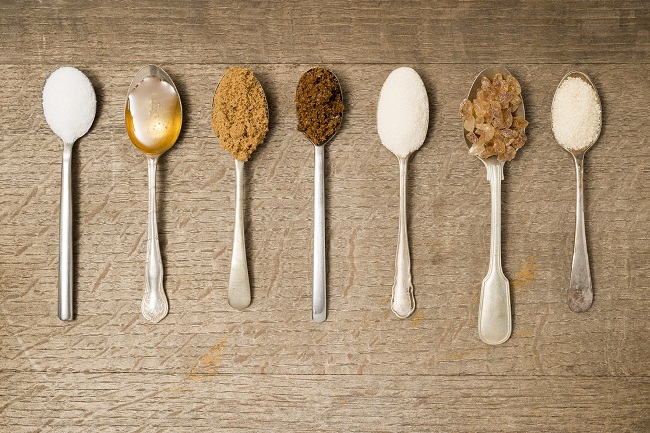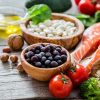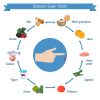Most people have either done this or experienced it – throwing tantrums in a store for that colorful bag of candy or the extra large bar of chocolate. It’s embarrassing to the parents and fun to the storekeepers. But, the love for candy and chocolates is beyond explanation. In fact, it is the habit of most parents to reward their children with candy, cakes, and chocolates for good behavior hooking them to sugary foods permanently.
A liking for sugary foods is deeply ingrained in us right from the childhood. Longing for these might also be genetic. But with the advent of diabetes, it is a notion among people that one gets diabetes with sugar. Is it one of those myths of diabetes? Let’s find out.
What are sugars?
Well, when we refer to something as sugar, we tend to associate it with table sugar. However, there are many other types of sugar. Some of these sugars are essential for the body to function, while others aren’t. Knowing the types of sugar and knowing what’s good and what isn’t will help us find out if one gets diabetes with sugar.
We get our sugars from carbohydrates, which are among the essential macronutrients. Carbohydrates are energy sources that are abundantly found in starchy vegetables, whole grains, cereals, fruits, and legumes. Almost all carbohydrates are digested and converted into sugars in our body.
Carbohydrates are categorized as simple sugars and complex starchy carbohydrates based on their chemical structure. In their classification, carbohydrates are divided into monosaccharides, disaccharides, and polysaccharides. Each type of carbohydrate is digested and metabolized in a different manner and each type produces separate forms of sugars.
Sugars produced by carbohydrates
| Monosaccharides | Disaccharides | Polysaccharides |
| Glucose | Sucrose | Starch |
| Galactose | Maltose | Glycogen |
| Fructose | Lactose | Cellulose |
| Ribose | ||
| Glyceraldehydes |
Food sources of various forms of sugar
| Suga r | Food Source |
| Glucose | Honey, Dried Fruits, Processed cereals, Sweet wine, Grape sugar, Fruit juices, Fresh fruits, Grains, Vegetables, Nuts, Seeds, Potatoes, Rice |
| Galactose | Dairy products like Milk, Yogurt, Cheese, Cottage Cheese, Cream, and other foods like Soy products, Honey, Beets, Kiwifruit, Nuts, Grains, Meat, Eggs |
| Fructose | Fresh fruits like apples, grapes, watermelon, and fruit juices. Dried fruits, syrups, sweeteners, sauces, processed foods, colas, sodas, cereal bars, and coconut sugar |
| Ribose | Milk, Cheese, Eggs, Mushrooms, Yogurt, Poultry, and some kinds of fish |
| Sucrose | Fruits, Vegetables, Sugar cane, Beets, Honey, Maple Syrup, Chocolates, Milkshakes, Fruit Juices, Baked foods like biscuits, cookies, cakes, and puddings, Fast foods |
| Lactose | Dairy products like Milk, Yogurt, and Cheese. Formula milk, Candies, Chocolates, Ice creams, Processed grains, Processed meats, Instant coffee, instant soups, Artificial sweeteners, Alcohol, & Margarine |
| Maltose | Sweet potatoes, Honey, Bread products, Candies, Energy drinks, Energy bars, Bakery products like pies & pizzas, Processed foods, Processed cereals, Grains like Wheat, Barley, Cornmeal, & Molasses |
| Starch | Grains like Wheat, Rice, Barley, Oats, Corn, & Millets, Bread, Cornmeal, Flour, Bakery products like Crackers, Pretzels, Instant noodles, Potatoes, Beans |
| Glycogen | Fruits, Starchy vegetables, Whole grains, Oatmeal, Yogurt, Pulses, Pasta |
| Cellulose | Cruciferous vegetables, Tubers, Sprouts, Pumpkin, Sweet potatoes, Figs, Beans, Oats, Barley |
What sugars are good and what are bad?
Now that you know where from you get various forms of sugar in food sources, we’ll go ahead and see what forms of sugar are good and what aren’t.
Many of the sugars that exist in vegetables, whole grains, and fruits are called natural sugars. However, artificial or added sugars are those that are synthetically added by food producers to enhance taste. Food producers add calorie sweeteners like table sugar, brown sugar, and high fructose corn syrup in order to enhance the taste of the product.
Foods like bakery products, candies, chocolates, sodas, ice creams, packed fruit juices, sweetened milk, and others have added sugars. Basically, any processed food contains added sugars. While it can be a little difficult for an average person to decipher the exact amount of added sugar present in a product by reading the nutrition label, one has to look out for the following names to know that there is added sugar in a product.
List of added sugars in processed foods
- Granulated sugar
- Brown sugar
- Anhydrous dextrose
- Dextrose
- Powdered sugar
- Corn syrup
- High fructose corn syrup
- Malt sugar
- Invert sugar
- Maltose
- Sucrose
- Fructose
- Molasses
- Syrups
If you see any of these additives on the nutritional labels of processed foods, it means that they have added sugars. If the product in question is a fruit or milk-based product, then it means that the total sugar content in the product is a combination of natural and added sugars. If the product isn’t fruit or milk-based, it means the total sugar is only added sugars.
Why you need to worry about added sugars?
Although we consume sugars from vegetables, grains, legumes, and fruits, consumption of added sugars is associated with the risk of many diseases. In the long term, with added sugars, one can get diabetes with sugar. Sugary snacks, sodas, and all processed foods that contain added sugars are the primary drivers of type 2 diabetes.
Far from being a myth of diabetes, one does get diabetes with sugar, added sugar.
Harmful effects of excess sugar and added sugar
Consumption of excess sugars and added sugars beyond a limit is associated with many diseases. Here’s a list of diseases caused due to added sugars.
- Suppression of immune system
- Vitamin deficiencies
- Chromium deficiency
- Quicker aging
- Chronic inflammation
- Tooth decay
- Obesity
- Diabetes mellitus
- Macular degeneration
- Association with cancer
- Arthritis
- Hyperactivity
- Alzheimer’s disease
- Lactose intolerance
- Sucrose allergy
- High levels of uric acid increasing risk of cardiovascular diseases
How to avoid ill effects of sugar
Sugar is highly addictive. It is known that sugar can be as addictive as cocaine. This means that children and adults consuming candies, and cakes in excess might develop a psychological dependence on sugary foods. Sugar addiction leads to binge eating, eating disorders, and in the end, diabetes and other diseases.
It is very important for a person to avoid added sugar at all costs. It is better to stay away from foods like cakes, biscuits, ice creams, cookies, candy, pastries, processes soups, bread, ketchup, fruit drinks, sodas, energy drinks and sport drinks.
Consuming natural sugars in the required quantities is recommended.
When it comes to people who already have diabetes, it is better to consume complex carbohydrates and foods with low glycemic index. Glycemic index is the relative ranking of carbohydrates and the way they influence blood sugar levels after consumption. Consuming foods with glycemic index below 55 leads to slower absorption and thus lesser spikes in postprandial blood sugar levels. Foods like fruits, vegetables, starchy vegetables, whole grains, and nuts should be consumed by people with diabetes.
When it comes to the permissible limits of sugar consumption, adult men can consume up to 37 gm, or 9 tsp. or 150 calories, and adult women can consume 25 gm, or 6 tsp. or 100 calories.
As for children, preschoolers can consume up to 16 gm, children from the age of 4 to 8 yrs an consume up to 12 gm, pre-teen up to 20 gm, and teenagers up to 32 gm.
















